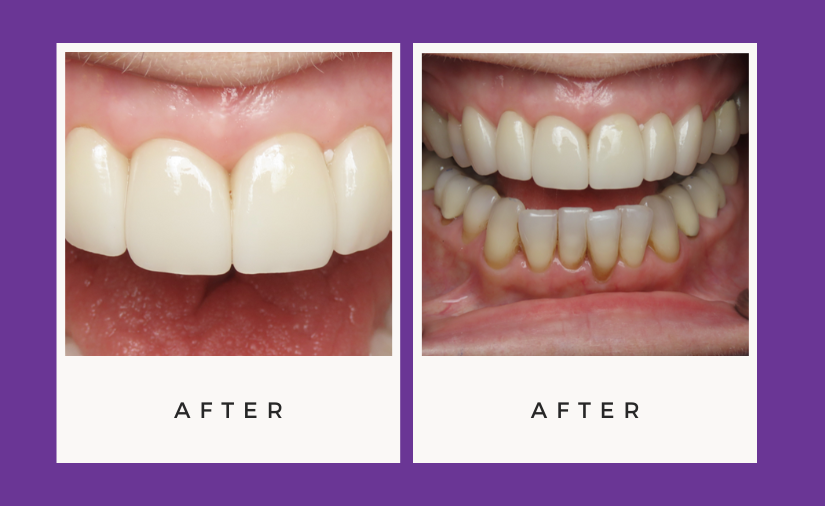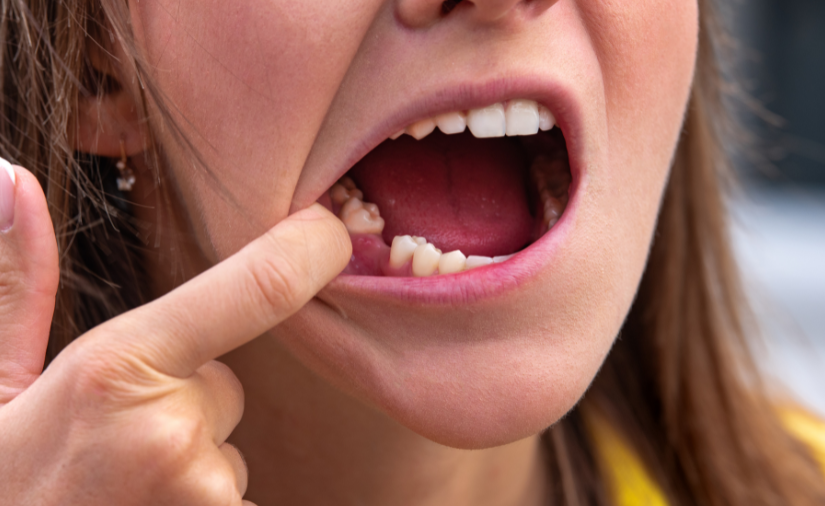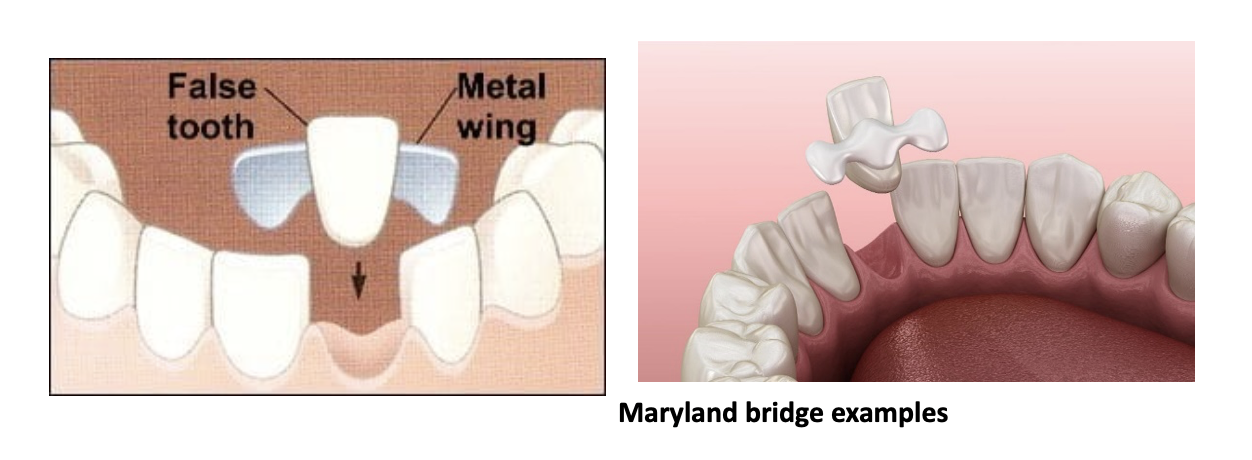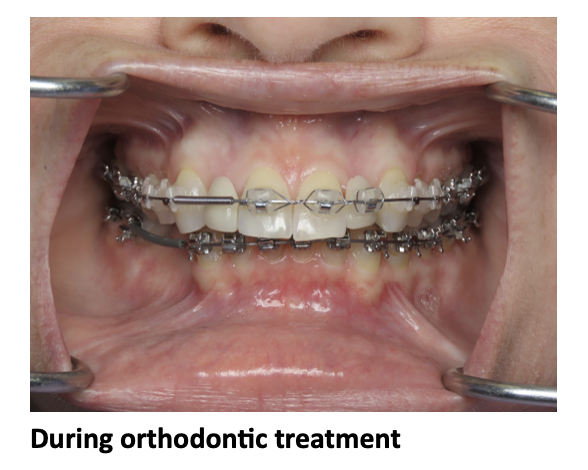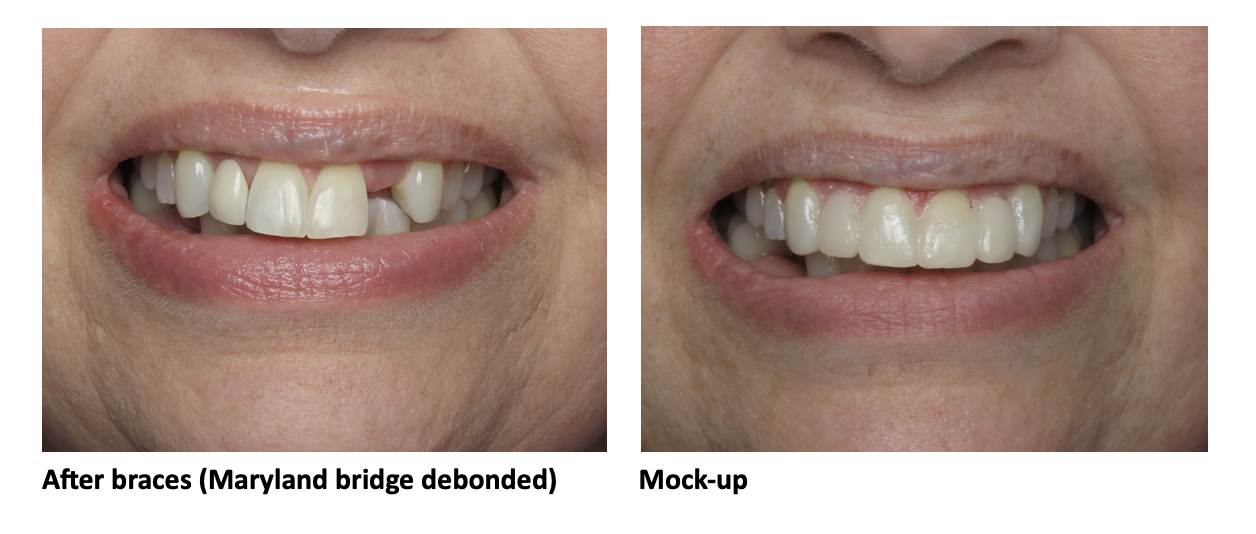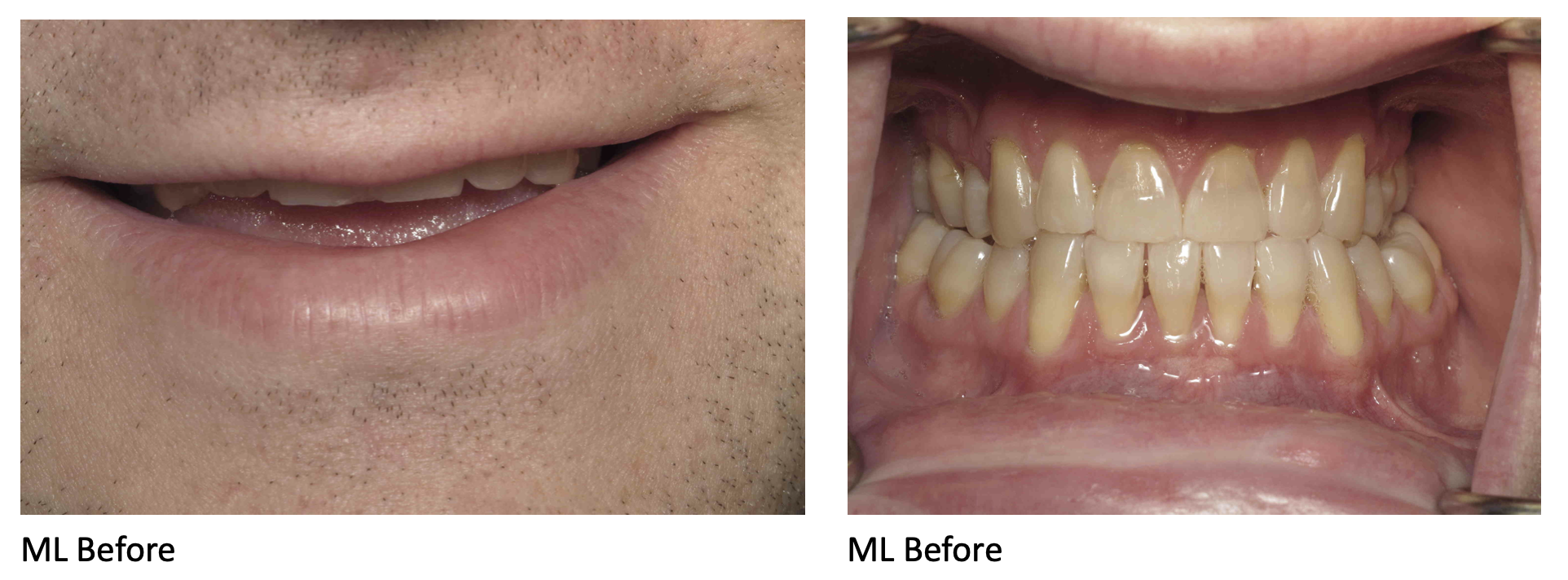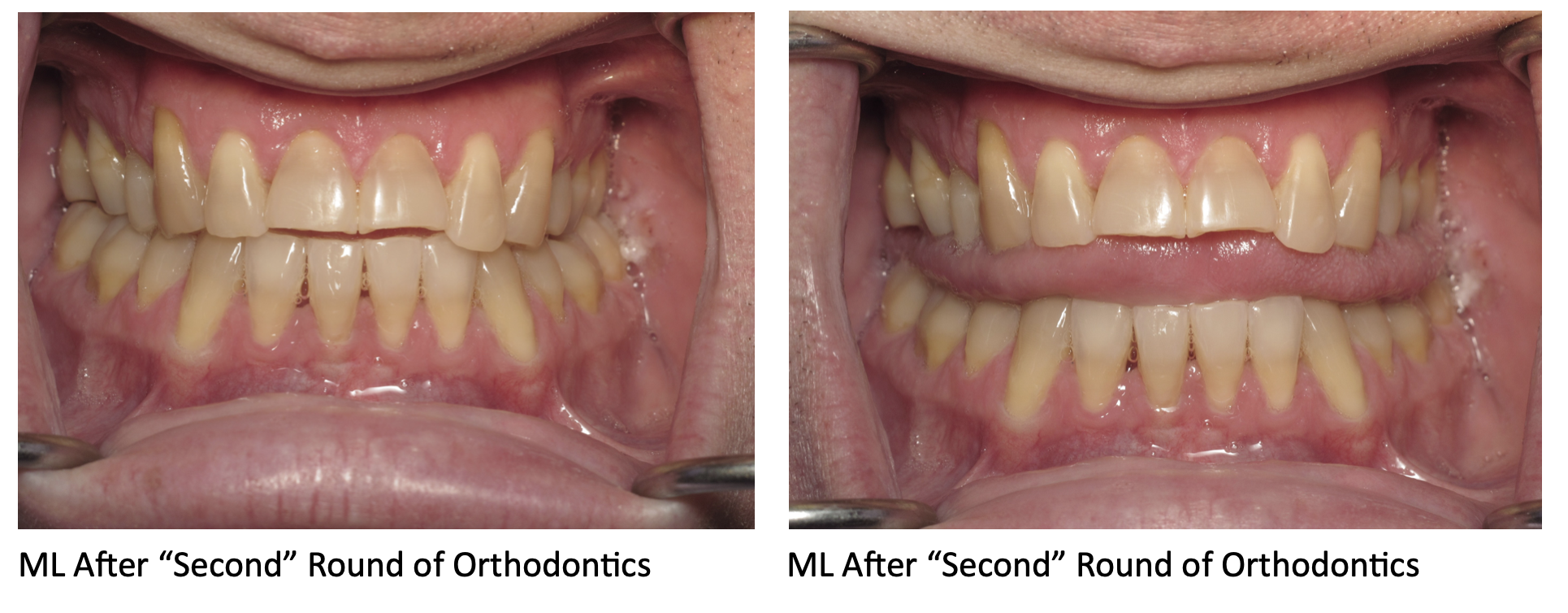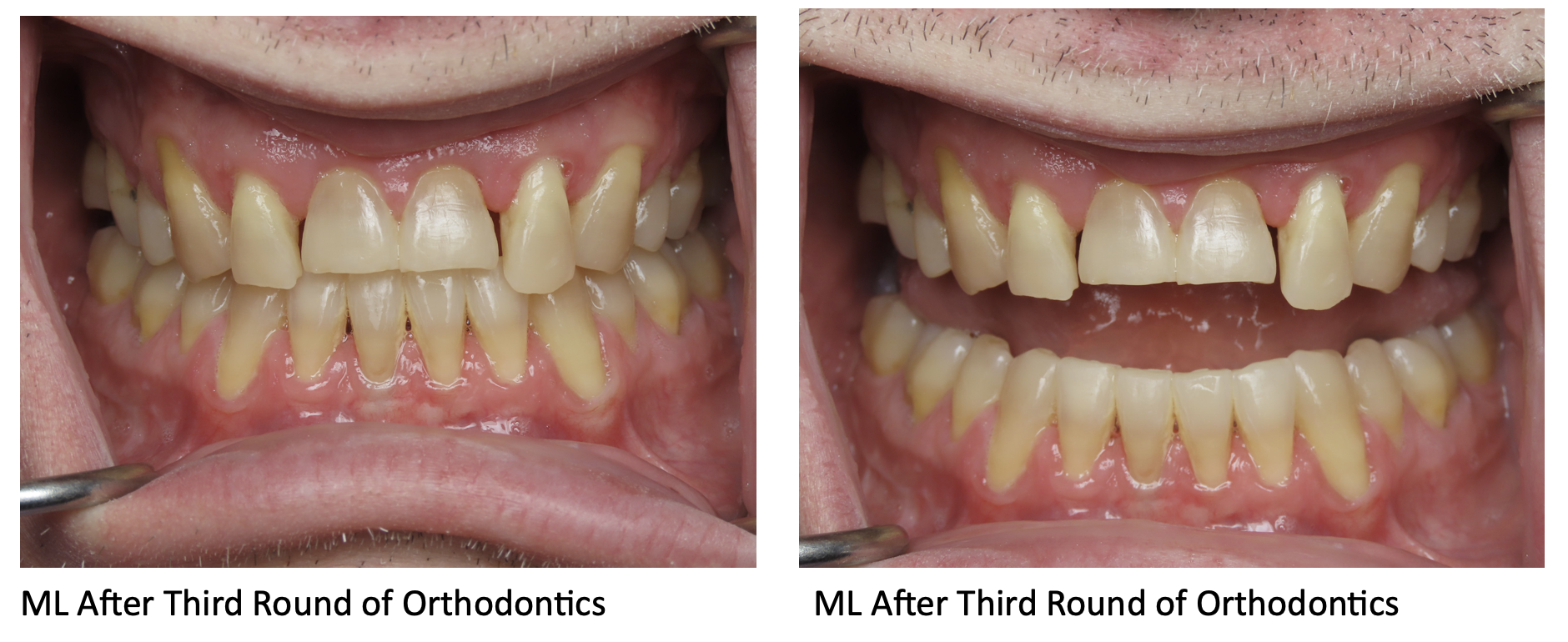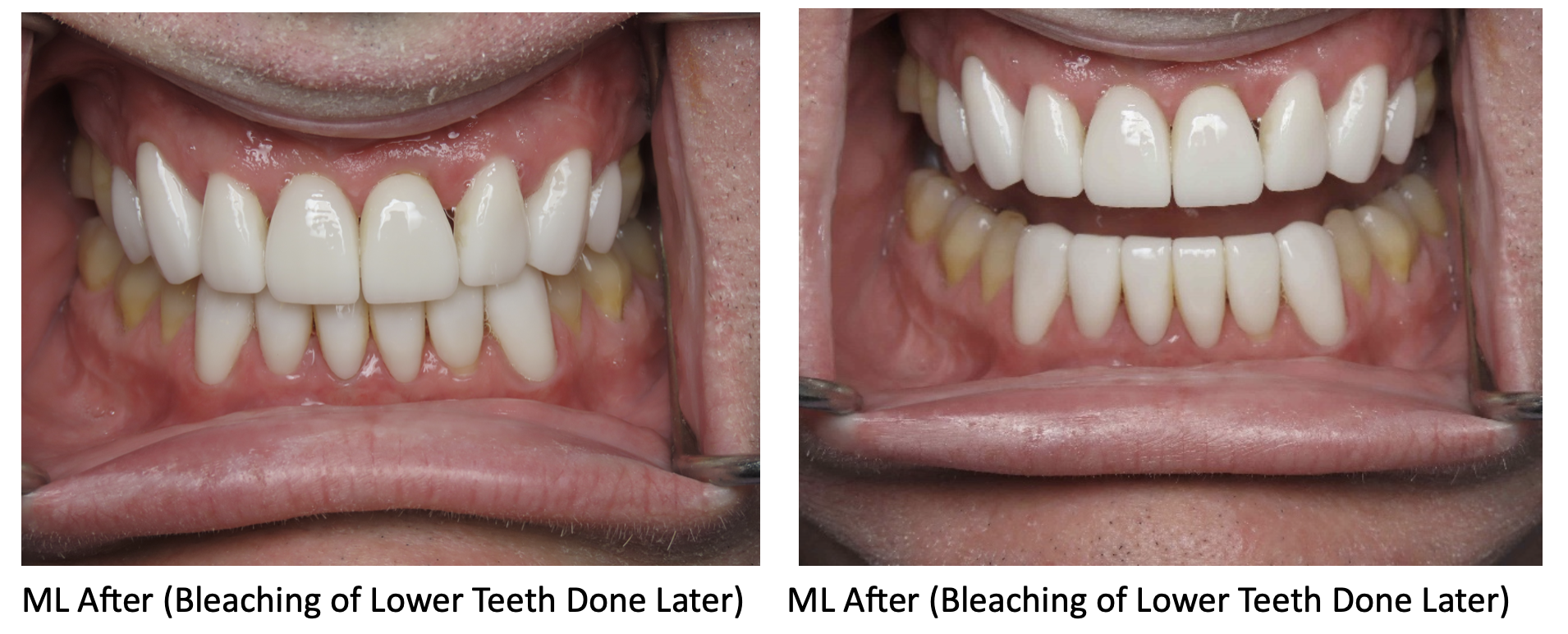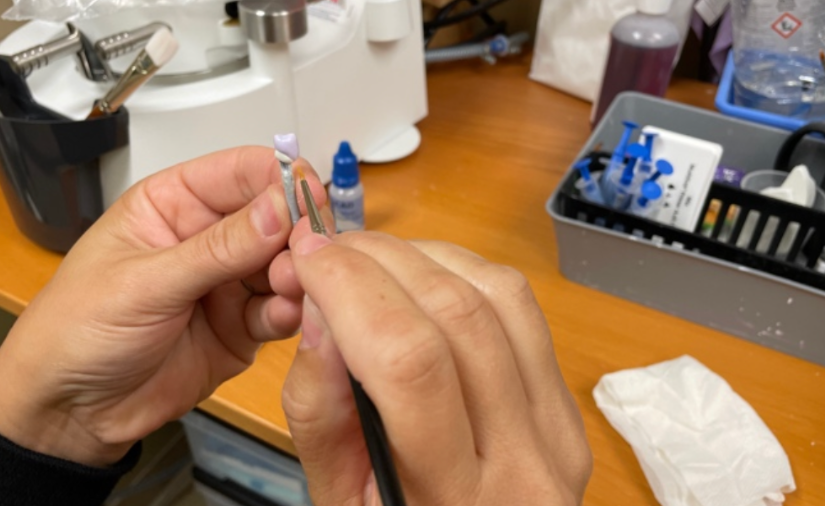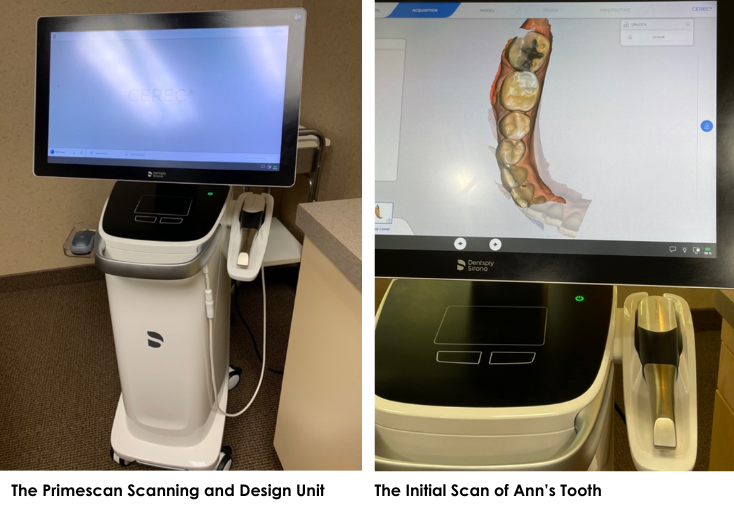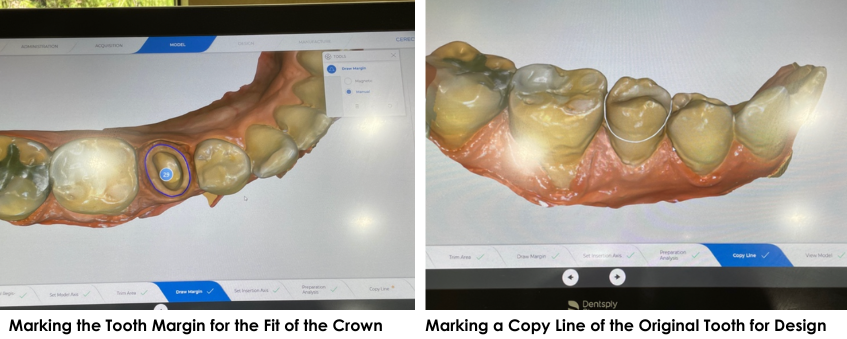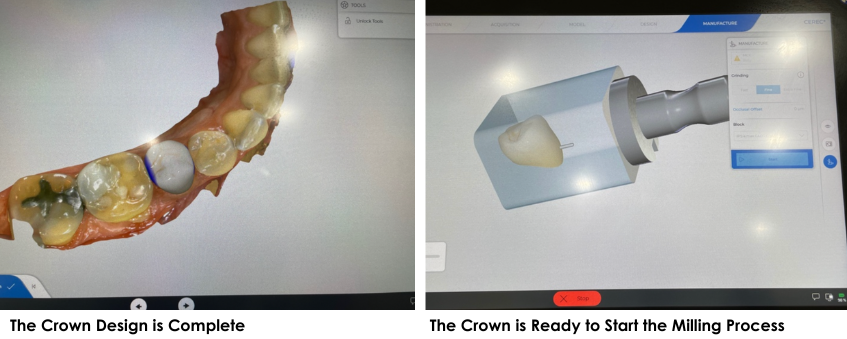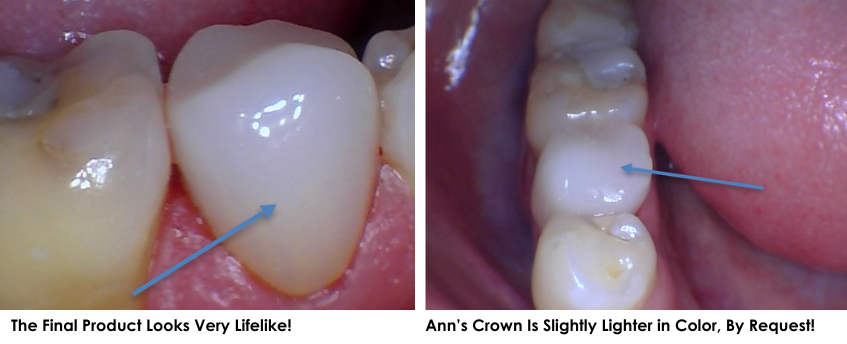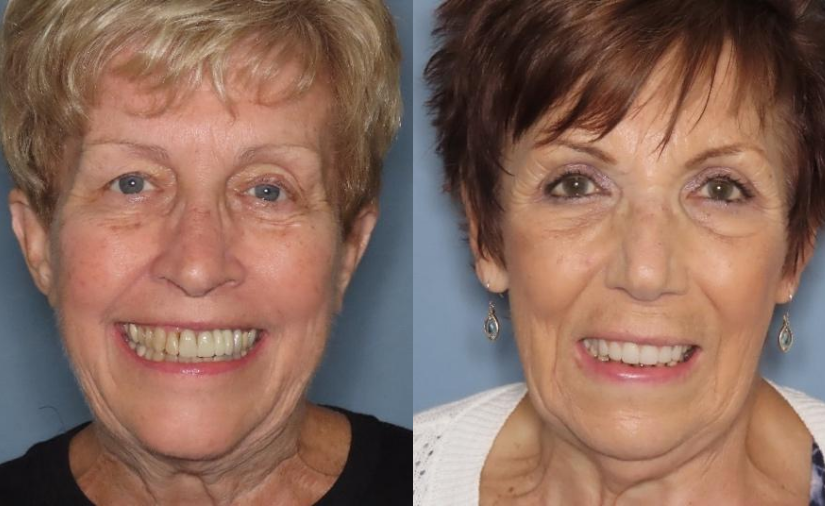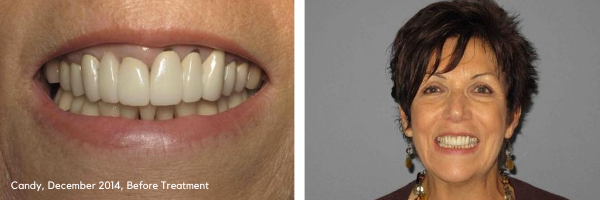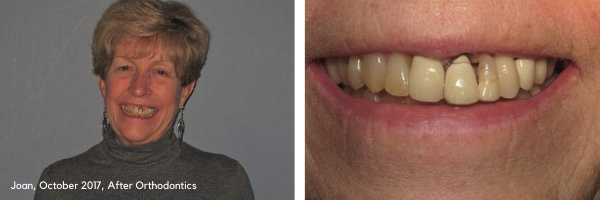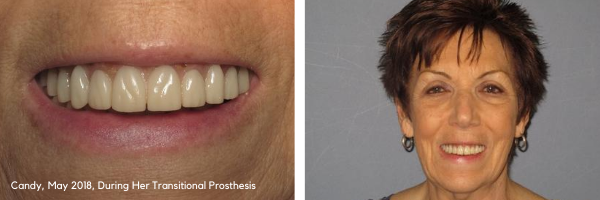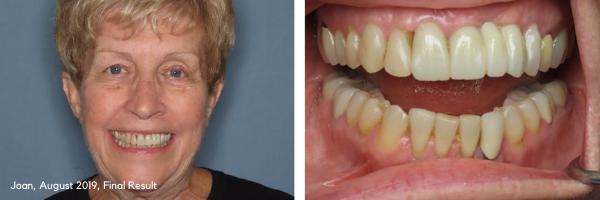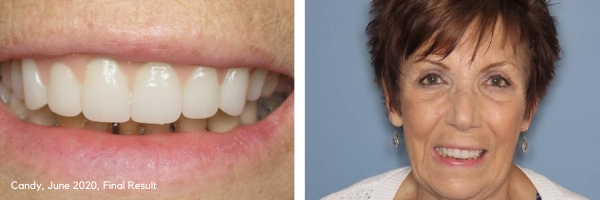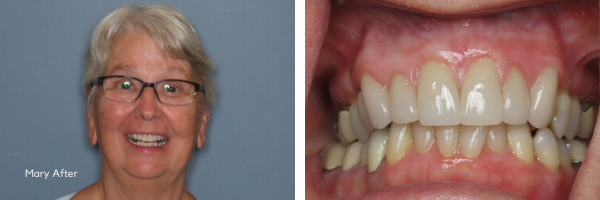By: Dr. Elizabeth Eggert
How did this start?
PC (name withheld by patient request) has been a long-time patient of Eggert Family Dentistry and was having issues with headaches and some trouble sleeping. She was interested in fixing her “two front teeth.” “My two front teeth are too big! One is longer than the other, the color bothers me and one front tooth is father forward. I had bonding done years ago and it doesn’t look good anymore.”
After many years, PC decided to undergo the records process with Dr. Elizabeth’s encouragement. During the records process, Dr. Elizabeth used models, x-rays, and photos of PC’s teeth, gums, and bite to better understand the options and to help PC understand any risks that may occur with treatment due to underlying functional issues.
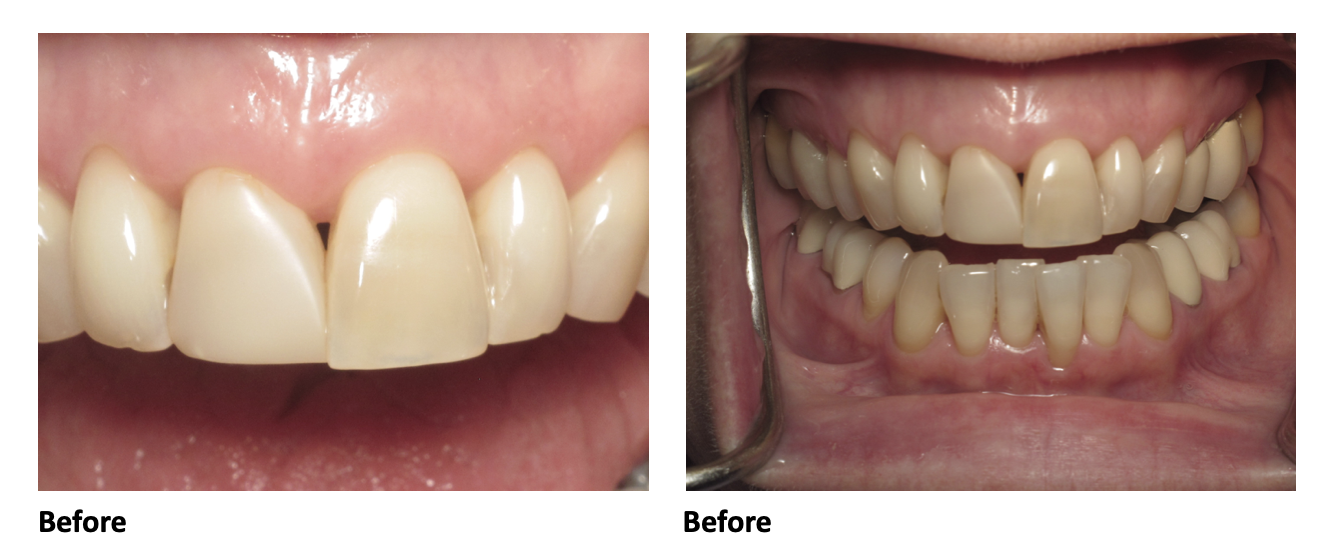
What was recommended?
Through the records process and with information from Dr. Elizabeth, it was determined that the position of PC’s front teeth and the existing wear (flattened edges of her front teeth) likely are at least partially due to airway compromises, both at night and during the day. Before restoring her teeth, it was recommended that PC undergo the Seattle Protocol to help determine if we could decrease the damage being done to her teeth and help protect her new restorations for the long-haul. However, it was difficult for PC to coordinate this as she travels out of the country to help her family multiple times each year. She and Dr. Elizabeth also discussed the option of talking with an ENT to improve nasal breathing, but PC declined this as well.
Therefore, PC elected to move forward with tooth restorations to address her esthetic concerns. Yet, PC’s tooth positions due to crowding caused some esthetic hurdles. Dr. Elizabeth talked with PC and recommended orthodontics to improve tooth spacing and gingival levels. PC also declined this so Dr. Elizabeth had to think outside the box, encouraging PC to minimally seek treatment with a periodontist (gum and tissue specialist) to level out her gingival architecture.
What did she want?
PC was the most concerned about her front teeth. She understood that by declining treatment to address her airway and tooth positions, we would be somewhat limited in our options and this was a risk she was willing to take. She really wanted her front teeth to be the same color and same shape. She wanted to minimize the number of restorations, but didn’t want to have to rely on bleaching to maintain the color of the upper front teeth.
What was involved?
After deciding that she would do bleaching to improve the color for her bottom front teeth and that she would do 6 upper front tooth restorations to give the best symmetry and color options, while still limiting the number of restorations, PC started by consulting with the periodontist so she could level her gingival architecture. PC had this minor surgery completed and after 6 weeks of healing, we were ready to plan for her restorations.
At the time that impressions were taken to develop a wax-up or “blue print” for her restorations, PC underwent the in-office Zoom Whitening procedure to brighten her natural teeth. PC was happy with the color and happy with the wax-up and so her teeth were prepared and the restorations were fabricated.
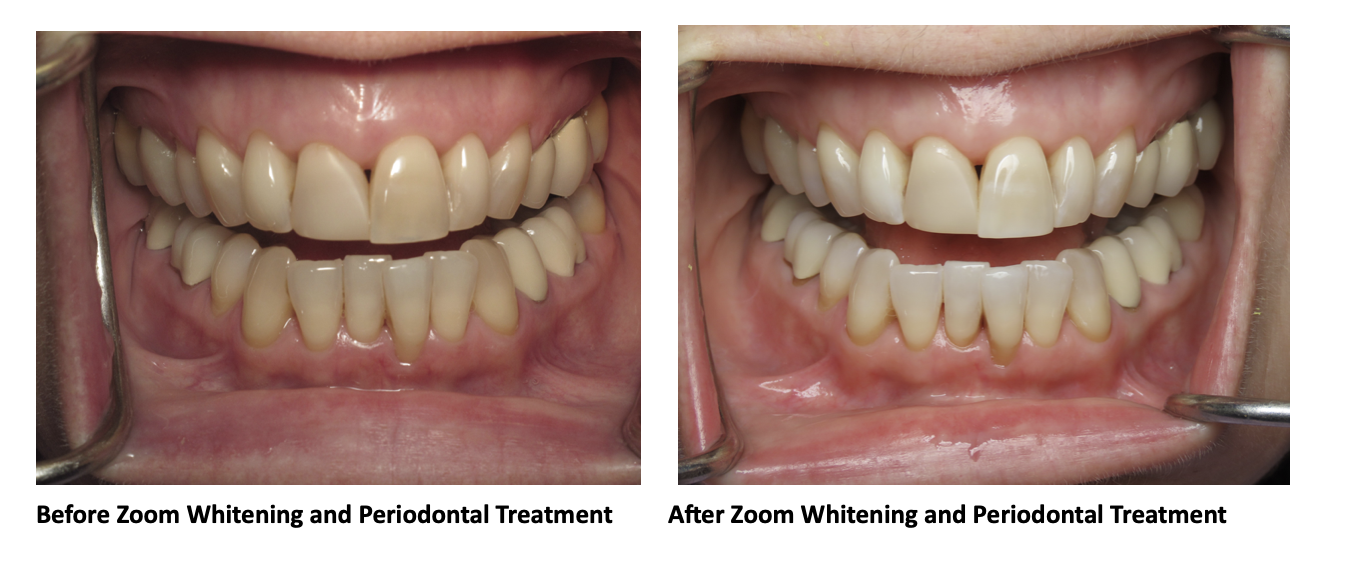
What does she think?
Once the restorations and bleaching were all completed, we asked PC what she thought about the process. She noted there were a lot of things she hadn’t thought about. She hadn’t realized how interconnected all the pieces were. “I thought it would be so simple, just put a little cover over my teeth.” She said she was amazed at how complex it really was and she was really impressed with Dr. Elizabeth’s knowledge, skills, and attention to detail. She is really pleased with how everything turned out. Thanks, PC, for putting your trust in us! We love serving you as our patient.

